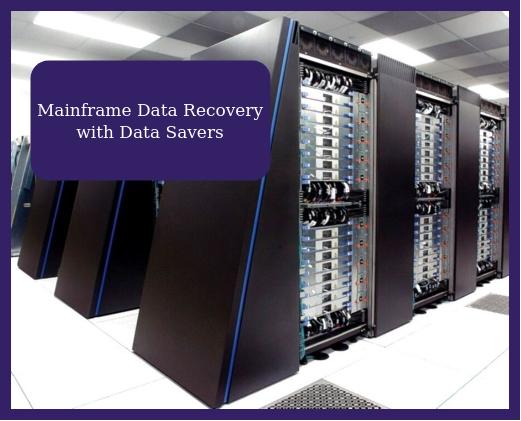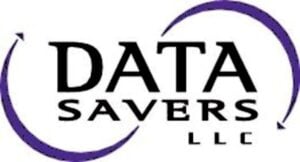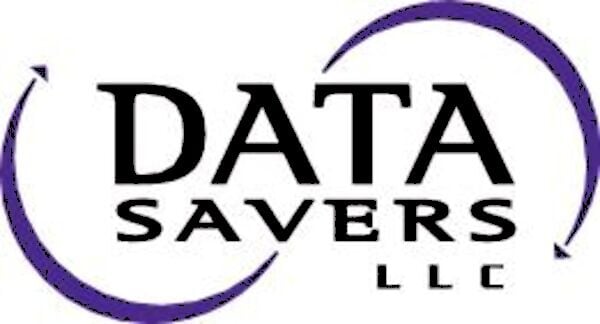First things first, are you responsible for database administration for a company that utilizes legacy mainframe storage technology? Are you concerned that some or all of your data could become corrupted, lost, deleted, or otherwise inaccessible? Take a deep breath, you’re in the right place. This article by the data storage experts at Data Savers LLC will dive into protecting mainframe data.
What is a Mainframe?
Mainframes are large-scale high-performance computing hardware that house a significant amount of memory and processing cores. They are designed to process billions of instructions and simple calculations at a rapid pace.
Mainframes are built with a focus more on throughput and improved reliability by employing redundancies and fault tolerant systems. That is why mainframes are often deployed by organizations with a high volume of data flowing through their systems, and decrease the likelihood that organizations experience any degree of downtime.

Request an Estimate for RAID Data Recovery!

Why you Should be Protecting Mainframe Data?
Being a legacy technology that many businesses still use, mainframes are constantly being integrated into modern IT infrastructure. This means that many mainframes are more exposed than they would be in either the pre-merge or post-merge states. When these massive pieces of infrastructure are being migrated, they are their most susceptible for bad actors to target. Given the sensitive nature of data processed within mainframes, a single vulnerability could result in a serious security breach which could result in lost revenue, damage to brand reputation, loss of intellectual property, and / or lawsuits. This is just one of many reasons why you should always keep your habits, hardware, and software up-to-date on the most recent developments in the world of cybersecurity.
Protecting Mainframe Data from Human Error
Human error in information security is one of the biggest threats in the digital world. Human make mistakes. It’s as simple as that. These mistakes could be anything from poor password management, negligence in handling sensitive data, the use of insecure applications, and / or an overall lack of knowledge on information security best practices. All these mistakes could cost you your data and in the worst-case scenarios, you could lose your job or your business. We don’t want you to land in a bad spot, so we will share some tips to avoid these nightmare scenarios.
Protecting Mainframe Data with Strong Password Management
Weak password security is one way to get your data compromised. People tend to use simple passwords that are easy for them to remember. These passwords are easy to guess for someone trying to steal from you. To better protect you and your data, try to set up a unique password. A password that cannot be cracked easily by malicious perpetrators. Organizations address this risk by implementing a password policy that forces their employees to use a stronger passwords.
Another password-related mistake is password-sharing. It is common a practice among employees. Avoid sharing your password with anyone. It’s not hard. There are plenty of topics for small talk that don’t expose one of the most important credentials you own. By doing so, you prevent the hypothetical malicious insider from accessing data they should not have access to.
Protect Mainframe Data with Standard Operating Procedures for Handling Sensitive Information
Negligence in handling sensitive data is another human error that is a somewhat common occurrence today. Sending privileged data in plain text form via email is a mistake. When sending sensitive data via email, it is a best practice to encrypt the data or better, the whole email. Encryption is a way to prevent messages from being seen (or rather, understood) by unintended or unauthorized recipients. Always maintain a backup of your data somewhere. Having a backup is better in case you or someone else deletes your data by accident.
Protect Mainframe Data with Restrictions on Insecure Software
Using insecure software is the final factor we explore that could compromise the security of your data. Malicious software and computer viruses can damage your data and any other tools you have on your device. If your computer is connected to a network, the chances for malware or virus to spread to other computers connected to the local area network (LAN) is high. As a form of prevention, it is recommended for you to use only trusted software from trusted providers. The use of antivirus software is also important as it automatically detects suspect software that could potentially harm your computer and its data.
Lastly, educate yourself on how to prevent such mistakes and threats. Self-awareness is the first step to making sure your data is secure from being compromised. It is better to be familiar with the best practices of information security as you are saving your money and valued time that could be spent on correcting those human errors.
